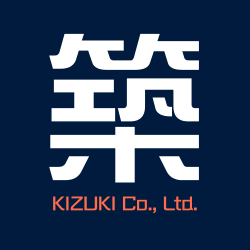In today’s defense industry, where rapid deployment and adaptability are crucial, innovative infrastructure solutions are essential. One of the most promising advancements in this space is 3D Construction Printing (3DCP). This cutting-edge technology has the potential to revolutionize the way military infrastructure is built. At KIZUKI Co., Ltd., we are committed to integrating 3DCP into Japan’s defense sector to enhance efficiency, durability, and strategic responsiveness.
Why 3DCP is a Game-Changer for Defense Infrastructure
3DCP brings a wealth of benefits that make it ideal for defense applications. Here’s why:
1. Speed and Efficiency
Traditional construction methods require extensive manpower and long project timelines. In contrast, 3DCP enables rapid construction with minimal human resources. By utilizing a central printing hub, large-scale prefabricated modules can be mass-produced, significantly increasing efficiency. Just like prefabricated structures, 3DCP can repeatedly print identical construction modules, and when a new design is needed, it can be adjusted and printed instantly. Furthermore, because 3DCP does not require formwork, the time and cost associated with formwork production are completely eliminated. This not only reduces material expenses but also accelerates project completion.
2. Modularity and Adaptability
One of the most significant advantages of 3DCP is its ability to operate in remote and off-grid locations. In areas without a stable water supply, for instance, water can be drawn from nearby rivers, stored in tanks, and pumped into the mixer for printing. Moreover, the printer itself is fully modular, allowing for easy transportation and assembly. The printer trusses can be disassembled, with each truss segment measuring just 2.5 meters in length and weighing as little as 101 kg. This lightweight, compact design makes it possible to transport the system via trailers or trucks, ensuring quick deployment even in challenging terrains.
3. Optimized Structural Design
A key advantage of 3DCP is its ability to leverage topology optimization and advanced computational techniques to maximize structural efficiency. Unlike traditional construction, which is often constrained by standard design limitations, 3DCP allows for complex geometric structures that are not only more aesthetically and functionally optimized but also reduce material waste. This means that every structure can be tailored to its specific purpose while minimizing resource consumption.
Defense Applications of 3DCP
The applications of 3DCP in defense are vast, spanning multiple critical areas:
1. Logistics and Supply Chain Infrastructure
- Warehouses and storage facilities for ammunition and supplies
- Transport networks such as bridges
2. Command and Control Infrastructure
- Data centers for operational command and cybersecurity
3. Operational Infrastructure
- Military bases and barracks for deployed forces
4. Defensive and Protective Structures
- Fortifications, bunkers, and missile defense systems
Commitment to Innovation and Collaboration
At KIZUKI Co., Ltd., we firmly believe that the future of defense infrastructure lies in innovation and strategic collaboration. By partnering with defense companies and government agencies, we aim to implement highly efficient and durable 3DCP-based construction solutions.
By fully leveraging the advantages of 3DCP, we are committed to driving advancements in defense infrastructure and contributing to the evolution of the industry.
We’d love to hear your thoughts—how do you see 3DCP shaping the future of military infrastructure?

